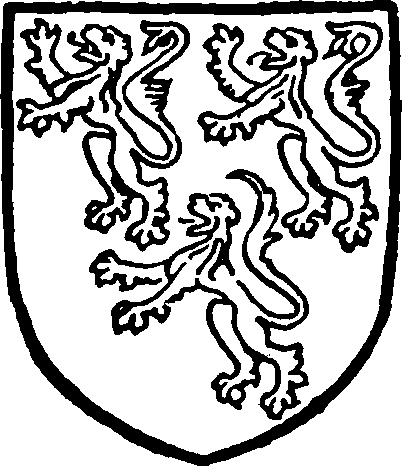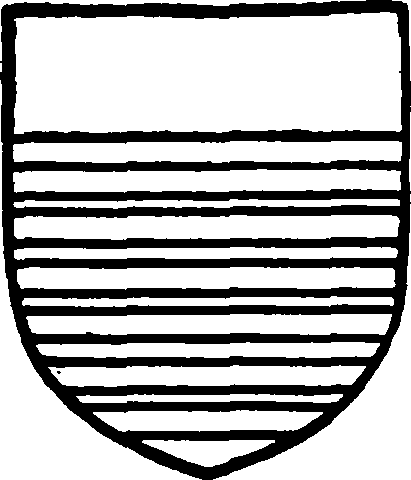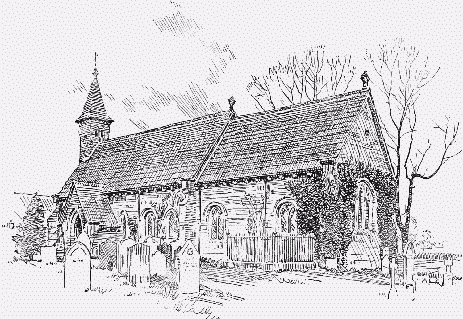A History of the County of York North Riding: Volume 1. Originally published by Victoria County History, London, 1914.
This free content was digitised by double rekeying. All rights reserved.
'Parishes: Thornton le Street', in A History of the County of York North Riding: Volume 1, ed. William Page (London, 1914), British History Online https://prod.british-history.ac.uk/vch/yorks/north/vol1/pp455-458 [accessed 19 April 2025].
'Parishes: Thornton le Street', in A History of the County of York North Riding: Volume 1. Edited by William Page (London, 1914), British History Online, accessed April 19, 2025, https://prod.british-history.ac.uk/vch/yorks/north/vol1/pp455-458.
"Parishes: Thornton le Street". A History of the County of York North Riding: Volume 1. Ed. William Page (London, 1914), British History Online. Web. 19 April 2025. https://prod.british-history.ac.uk/vch/yorks/north/vol1/pp455-458.
In this section
THORNTON-LE-STREET
Torentum, Torentone (xi cent.); Thorneton in Strata (xiii cent.); Thornton in the Strete (xiv cent.).
Thornton-le-Street ecclesiastical parish includes the townships of Thornton-le-Street and North Kilvington, the latter now a separate civil parish. The area of the whole is about 2,323 acres, of which 705 are arable land, 1,246 permanent grass and 175 woods and plantations. (fn. 1) Wheat, barley, oats and turnips are the chief crops grown. The upper soil is loam on a subsoil of Lower Lias, except near the Cod Beck, where it is alluvium. The land lies generally from 150 ft. to 200 ft. above ordnance datum, but rises to the west of Kilvington Hall to 225 ft.
The hamlet of Thornton-le-Street is situated by the Cod Beck and on the road from Northallerton to Thirsk. It consists of little more than the church, the vicarage and the school. There is a ford across the beck near the school and two others lower down. A little higher up is a corn-mill, and above that Brawith Bridge. Between the road and the beck are some old inclosures. Thornton-le-Street Hall stands among woods in a large park about half a mile southeast of the village. It is a modern mansion belonging to Lord Cathcart, and is now the residence of Mr. G. J. Murray.
The Old Hall stands on the main road a short distance to the north of the village. The house, which is L-shaped on plan, is built of faced stone two stories high and may date from the late 17th century. The windows are all modern, but the two chimney stacks of three flues each are original. The building stands on a steep bank above the Cod Beck.
Further north is the old mill, part of which is of the 16th-century date. The wing containing the water-wheel is built of stone up to the first floor and at the north and south ends has a tabled string-course at the top of the stone work. On the east face is a flat pointed door with a single-light window, and at the south-west angle are two sundials, one having a pierced iron gnomon. The upper story is of brick, as is the adjoining house, which dates mainly from the 18th century.
A short distance away to the east stands a farmhouse of late 17th-century date, but much patched and altered. It is built of stone, as are several of the adjoining farm buildings.
Colvis Hall, 1 mile to the south of Thornton-leStreet, is now a farm-house. The rear portion of the house dates from the 17th century and has a large chimney stack at the west end. A wing projecting to the north has been reconstructed with old materials, including strings and window openings. The house is two stories in height and built of stone, with the exception of the 18th-century brick south front.
The south-east boundary of North Kilvington civil parish is formed by Spittal Beck, which flows into Cod Beck just below Kilvington Old Hall with its moated inclosure. This house appears to date from early in the 18th century. It is two stories high and rectangular in form, the front and returns being faced with stone with a plain band dividing the stories. The back is of brick, and on this side the northern end is occupied by the Roman Catholic chapel of St. Anne, which dates from 1690. Though not now used, it is still fitted up with altar and pews, and is lit by large square-headed windows, with flush frames, in the west wall. The brick walls of an extensive garden remain to the south and appear to be considerably older than the house.
North Kilvington consists of the Old Hall and one or two cottages built on Moorhouse Lane. The modern Kilvington Hall, which commands picturesque scenery, was built in 1835 by the late Mr. Thomas Meynell about a mile north-east of the site of the Old Hall. It is now the property of Mr. Edgar Meynell and the residence of Mr. William Henry Mott, J.P.
Manors
In 1086 Thornton-le-Street was soke of the 'manor' of Northallerton (fn. 2) (q.v.), the descent of which the overlordship followed, being held by the bishops in chief for half a knight's fee. (fn. 3) The vill in 1284–5 consisted of 6 carucates, of which 5 were held by Richard de Wassand and 1 by Richard de Thornton. (fn. 4) John de Wassand and John de la Mare were the tenants in 1316. (fn. 5) John de Wassand was in 1340 granted free warren here. In 1349 Alice widow of Sir John de Wassand, kt., claimed dower in the manor and mill (fn. 6) of Thornton-le-Street from Robert de Wadesley. (fn. 7) Robert de Wadesley, probably the grandson of Robert, (fn. 8) was in possession of the vill, which in 1433 was settled on his son Edmund and Alice his wife. (fn. 9) They appear to have left two daughters and co-heirs, Eleanor, and Katherine, who married Sir John Everingham of Birkin. (fn. 10) John (fn. 11) son and heir of Katherine at his death in 1528 was seised of half the manor and was succeeded by his son Henry (fn. 12); he died before 1546 and left three daughters, of whom Eleanor was eventually his sole heiress. (fn. 13) The share of Katherine Wadesley seems to have reverted to the descendants of her sister Eleanor, who married Henry Everingham of Stainbrough. (fn. 14) Thomas Everingham died in 1517 seised of half the manor of Thornton-le-Street, (fn. 15) and was probably the son of Eleanor. (fn. 16) He left a son Henry, (fn. 17) probably the Henry Everingham of Stainbrough (fn. 18) who held the manor of Thornton in 1539. (fn. 19) From this Henry (fn. 20) and his son Henry (fn. 21) the manor of Thornton-le-Street was acquired by John Talbot, who died before 1540, and his son John, (fn. 22) who died in 1573 seised of three-fourths of the manor. (fn. 23) The remaining portion seems to have been represented in 1587 by a third part then held by Roger Meynell, (fn. 24) lord of North Kilvington (q.v.), and it is uncertain whether it was ever reincorporated in the manor, though John, son of John Talbot's son and successor Roger Talbot, (fn. 25) is said to have held the manor of Thornton-le-Street. He died in 1638, leaving a son and successor John, (fn. 26) who at his death in 1659 was succeeded by his son Roger. (fn. 27) Roger Talbot died in 1680. (fn. 28) The manor descended to Roger Talbot, who was lord in 1734. (fn. 29) In 1793 it was conveyed to Samuel Crompton by Henry Maister, Peter Acklom and Caroline his wife, and Henry Boldero Barnard and Sarah Elizabeth his wife. (fn. 30) Sir Samuel Crompton, created a baronet in 1838, had no son. (fn. 31) His eldest daughter Elizabeth Mary married her cousin Earl Cathcart in 1850, and brought him the manor of Thornton with other Yorkshire estates. (fn. 32) The present Lord Cathcart is now lord of the manor.

Talbot of Thornton. Argent three leaping lions purpure.
NORTH KILVINGTON is not distinguished in the Domesday Survey from South Kilvington (q.v.). Before 1200 it had become part of the fee of the Bishops of Durham, as in that year Bishop Philip of Poitou sold the whole vill for 100 marks to Gilbert de la Ley to hold by service of one knight's fee. (fn. 33) Gilbert soon afterwards conveyed the manor of Kilvington to the Abbot and canons of Egglestone, (fn. 34) to hold by the same service. (fn. 35) In confirming this grant the bishop commuted the knight's service for 5 marks. (fn. 36) Philip de la Ley, son of Gilbert, afterwards claimed the knight's service from the abbot, who had refused to recognize it. In 1251 an arrangement was made by which the abbot and church should hold the manor of North Kilvington of Philip and his heirs for one knight's fee, while Philip and his heirs should have the right to present nine canons. (fn. 37) By 1284–5 the Abbot of Egglestone held North Kilvington for half a knight's fee directly from the Bishop of Durham. (fn. 38) Of the 7 carucates in the vill 5 carucates 3 oxgangs were held by the abbey in demesne and the remainder was in the hands of various tenants. (fn. 39) North Kilvington remained with the Abbot and convent of Egglestone until the Dissolution. (fn. 40)
In 1544 the manor was granted by the king to William and John Sewster, (fn. 41) and they obtained a licence in the same year to alienate it to Henry and Anthony Meynell, (fn. 42) two younger sons of Robert Meynell, who had bought some land here in 1522. (fn. 43) At this time Anthony Meynell was by far the largest tenant in North Kilvington. (fn. 44) Henry Meynell died in 1557, his eldest brother Robert, serjeant-at-law, being heir to his property, including half this manor. (fn. 45) Half seems to have passed, probably under his will, (fn. 46) to his brother Anthony, who died in about 1576 seised of the manor of North Kilvington, which in 1572 he had settled on his son Roger and his heirs. (fn. 47) At the death of Roger the estate was inherited by his son Thomas, whose lands were sequestered for recusancy, but after his death in 1653 were recovered by Anthony (fn. 48) his son. Anthony died in 1669, and was succeeded by his son Thomas, who was succeeded by his second but eldest surviving son Roger, who died in 1683. His son and heir Thomas, who had no children, is said to have died in 1708. (fn. 49) His brother Roger, however, possessed the manor of North Kilvington in 1703, (fn. 50) and had a son and heir Roger, (fn. 51) who held the manor. His successor was his eldest son Roger, whose heir was his brother Thomas. (fn. 52) Thomas Meynell was seised of the manor of North Kilvington in 1758. He was a Jesuit, and assigned his estates to his younger brother Edward, (fn. 53) at whose death in 1808 North Kilvington passed to his second son Thomas, his eldest son Edward having died young. (fn. 54) Thomas died in 1854, leaving four sons, the youngest of whom, Edgar John Meynell, was afterwards heir to his nephew. Thomas, the eldest son, who inherited North Kilvington, died childless in 1863, his heir being his nephew Edward Thomas Meynell, the son of his brother Edward, who had died in 1856. Edward Thomas died without children in 1879, and was succeeded by his uncle Edgar John Meynell, J.P., Recorder of Doncaster from 1870 to 1901, whose second son, Mr. Edgar Meynell, is now lord of the manor. (fn. 55)

Meynell of Kilvington. Azure three gimel bars and a chief or.
Church
The church of ST. LEONARD consists of a chancel 27 ft. 5 in. by 13 ft. 5 in., with a small vestry on the north side, and a nave 47 ft. by 15 ft. 9 in. with a porch on the south side. These measurements are all internal.
The thickness of the north wall of the nave and the zigzag ornament on the label over the south doorway seem to indicate 12th-century work, but this is the only evidence of this date, and not perhaps reliable. The chancel and all the details of the nave are of late 14th-century date except the nave north window, which is early work of the same period. The vestry is a much later addition, and the whole of the west end, with the porch, was built about 1855. A sketch in the porch taken from the south-west shows the church as it stood before this work was done. The three windows shown to the east of the porch are unchanged, but there was a window to the west of it which has gone. The west wall was blank, and the roof was apparently hipped and had a wooden bell-turret; these features have been replaced by a gable end and a stone bell-turret partly supported by a buttress. The corbel table round the eaves has also been added.

Thornton-le-Street Church from the South-east
The east window of the chancel, which has been much renewed, has three cinquefoiled lights. In the gable above is a small trefoiled circular light. There is a single trefoiled light in the north wall of the chancel and two windows in the south wall, each of two cinquefoiled lights. Between these windows is a low priest's doorway, apparently modern, with a shouldered arch. Near the east end of the south wall of the chancel is a piscina with chamfered jambs and a segmental head. The basin is multifoiled. The whole has been covered with brown paint by the continuation across it of the painted dado of the chancel. The vestry is entered from the north-west of the chancel by a doorway with a shouldered arch. In one corner is a fireplace and in the east wall is a modern window. The 14th-century chancel arch is two-centred and of two chamfered orders, the inner springing from small shafts carried upon corbels. The lower parts of the jambs have been renewed and all the stonework has been retooled.
The north wall of the nave contains one 14thcentury window of two slightly trefoiled lights with a pierced spandrel between. The head is of one stone, and there is no arch. Between this window and the west wall is the north doorway, now blocked, although there is here a modern door. The jambs are chamfered, and are evidently old, but the arch, which is semicircular, is apparently of later date. The first window in the south wall of the nave is a wide single cinquefoiled light partly restored, with a label of 15th-century section. The rear arch is square. The second window is similar to the south windows of the chancel. The third is a single trefoiled light with a square rear arch, and is apparently of the same date. To the west of this is the south doorway, which has chamfered jambs and a drop arch, above which is the label, which has already been referred to as probably belonging to a 12thcentury doorway. The south porch has low angle buttresses and a doorway with jambs and arch of two chamfered orders. The west wall has two modern tall windows with cinquefoiled heads.
The font, which is placed near the south doorway, is possibly of late 16th-century date It has a circular bowl with a fillet round the top, and stands on a circular shaft with moulded capital and base.
The roofs are modern and are covered with large stone slates.
On the east wall of the chancel is a stone monument of Renaissance design with an inscription in brass to Roger Talbot, who died in 1680, eldest son of John Talbot, who married Elizabeth sister of Ambrose Pudsey of Bolton in Craven. Above the inscription and between the broken pediment are shields bearing the arms: Three leaping lions impaling a cheveron between three molets. On the floor of the sanctuary on the south side is a small brass to his wife Elizabeth, who died in 1694.
On the south wall of the chancel and near the east end is a stone panel with ornament in low relief surrounding a square brass, which is inscribed to Lady Bridget daughter of William Pennington, who married firstly Ambrose Pudsey of Bolton in Craven, and afterwards Thomas Laton. She died in 1664. There are two shields, the first Pudsey impaling Pennington, the second Laton impaling Pennington.
There are two modern bells.
The plate consists of a silver cup, paten and flagon. The cup, of 1784, is inscribed 'I Cto Sacrum' and 'In usum Parochiae de Thornton.' The paten and flagon are dated 1852 and 1856 respectively.
The registers begin in 1598.
Advowson
In 1247 Geoffrey de Upsall granted the advowson of the church of Thornton-le-Street to the hospital of St. James near Northallerton, (fn. 56) and it remained in the hands of the hospital until the Dissolution. (fn. 57) By 1291 a vicarage had been ordained. (fn. 58) In 1540 (fn. 59) the rectory and advowson of Thornton-le-Street, with the other possessions of the hospital, were granted to Richard Morrison, (fn. 60) who in 1545 exchanged them with the Crown for other property. (fn. 61) In the following year they were granted to the Dean and Chapter of Christ Church, Oxford, (fn. 62) to whose successors they still belong.
Charity
A sum of £1 1s. a year out of an estate in this parish, formerly known as the Talbot property, now belonging to Earl Cathcart—supposed to represent a gift of Lady Fagg—is distributed at Christmas among the poor.